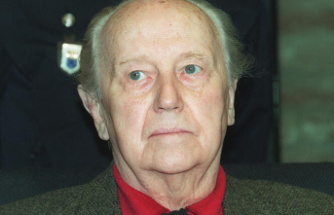District heating customers are currently not covered by the gas surcharge. It is still unclear whether this will remain the case. What is certain, however, is that heating with district heating will become drastically more expensive. By how much depends primarily on where the waste heat comes from.
The cost of heating with oil? More than doubled. That with gas? More than tripled. So far. In comparison to the previous year. And district heating? After all, around 14 percent of German households are connected. And in Berlin, 43 percent of all households are heated with hot water that comes from the power plants. How expensive will it be?
Questions and answers on the topic:
What is district heating anyway?
District heating is the supply of buildings with heat from a power plant or heating plant. The waste heat generated there reaches the end user through a pipe system. District heating customers therefore do not need their own heating system at home. The main fuels used are natural gas, hard coal and lignite. But heat that is generated during waste incineration or industrial processes is often used as district heating, as the consumer advice center informs. Heating with district heating is considered comfortable and environmentally friendly.
But in the case of district heating, changing suppliers is not possible. Planning and operation of the power plant and the networks are in the hands of one company. The construction of a double infrastructure by another company would be uneconomical. Therefore, each district heating company is a local monopolist. And since all fuels have become massively more expensive, the prices for district heating are also rising sharply.
How expensive is district heating?
The district heating prices vary greatly depending on the provider. Which has to do with what the district heating is obtained from. If a provider operates several district heating networks, each network area often has a different price, which can even lead to different prices within the same city. The district heating prices are usually made up as follows:
The actual heat consumption is billed via the working price. The basic price is a fixed price per year and includes the proportionate costs of the power plant, networks, personnel and maintenance. On average, the basic price makes up around 25 percent of the total costs, and the working price around 75 percent. The average price for district heating based on the nationwide heating index was around 9 cents per kilowatt hour in the past, with the basic price being included here proportionately. With a consumption of 20,000 kilowatt hours, customers paid around 1,800 euros a year. However, there are significant upward and downward deviations from this average price. Until now, district heating costs were higher than those of gas, oil or pellet heating.
And how expensive will it be?
According to the portal energie-experten.org, the chalice of exploding heating costs cannot be ignored by district heating customers either. Many utilities have therefore announced that they will increase their prices. For example, Stadtwerke Witten. Due to the increased procurement costs for gas and electricity, the purchase of district heating has also become more expensive here: The working price has increased by 6 cents per kWh to 17.39 cents and thus by around 50 percent. For an average apartment in Witten with a consumption of 20,000 kWh per year, this means additional costs of around 1200 euros per year.
Stadtwerke München recorded a total increase of 116 percent in the second quarter of 2022 compared to the previous year. Rheinenergie is preparing its customers in Cologne for a price increase of 73 percent in October. And customers of Hamburger Energiewerke should be prepared for inflation of up to 60 percent. Apart from that, district heating providers have had the opportunity since July of this year to increase their prices at short notice (after two weeks at the earliest) if gas is used to generate heat and the gas supplier increases the prices.
And in Berlin?
Here, as usual, things are a bit more complicated. 43 percent of all households here obtain district heating, almost 75 percent of which is supplied by natural gas. In Hamburg it is only 15 percent. Berliners not only have to face the question of security of supply, but also expect district heating prices to rise more sharply than in cities that use less gas to generate district heating. According to the capital’s main supplier, Vattenfall, price increases of around 50 percent compared to the previous year can already be foreseen on ntv.de demand for the first half of 2022. Information on the second half of the year was not given.
Are district heating customers also affected by the gas surcharge?
District heating customers have not yet been recorded. The question is currently under review.












